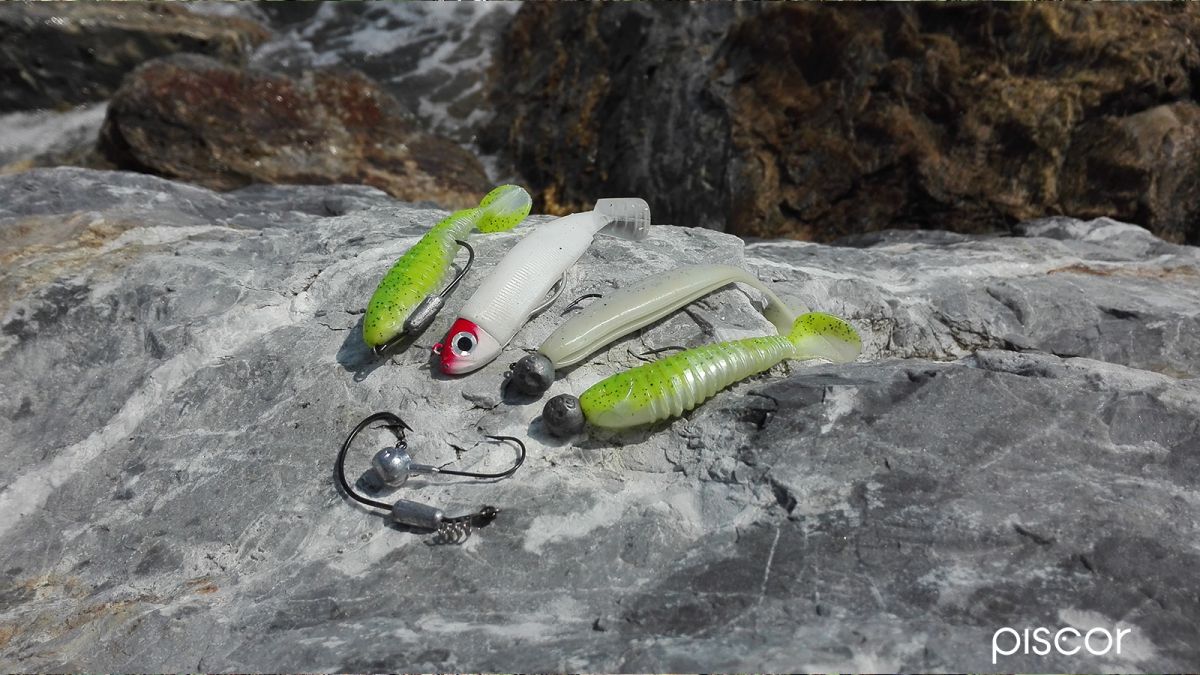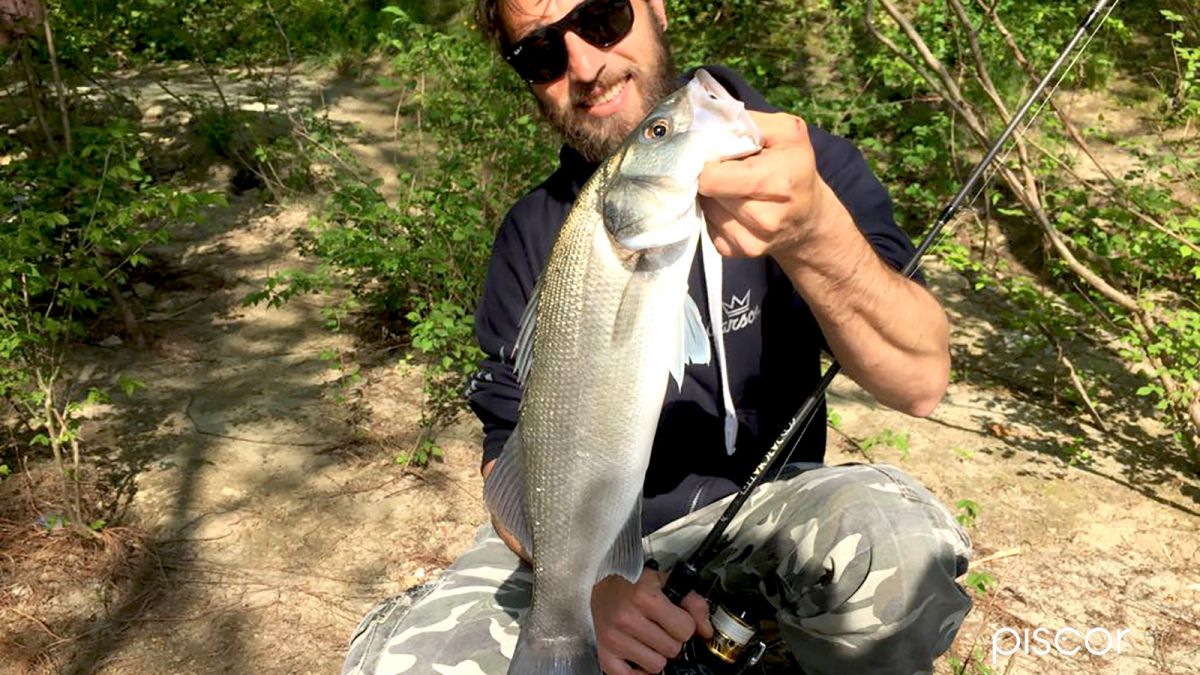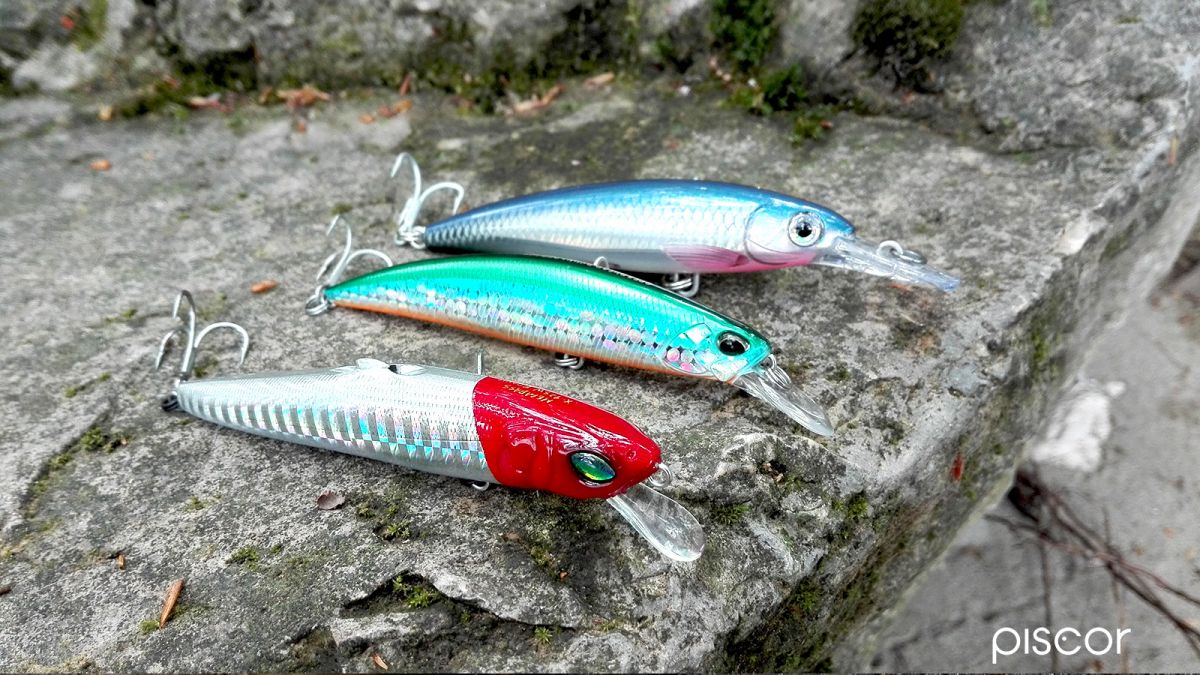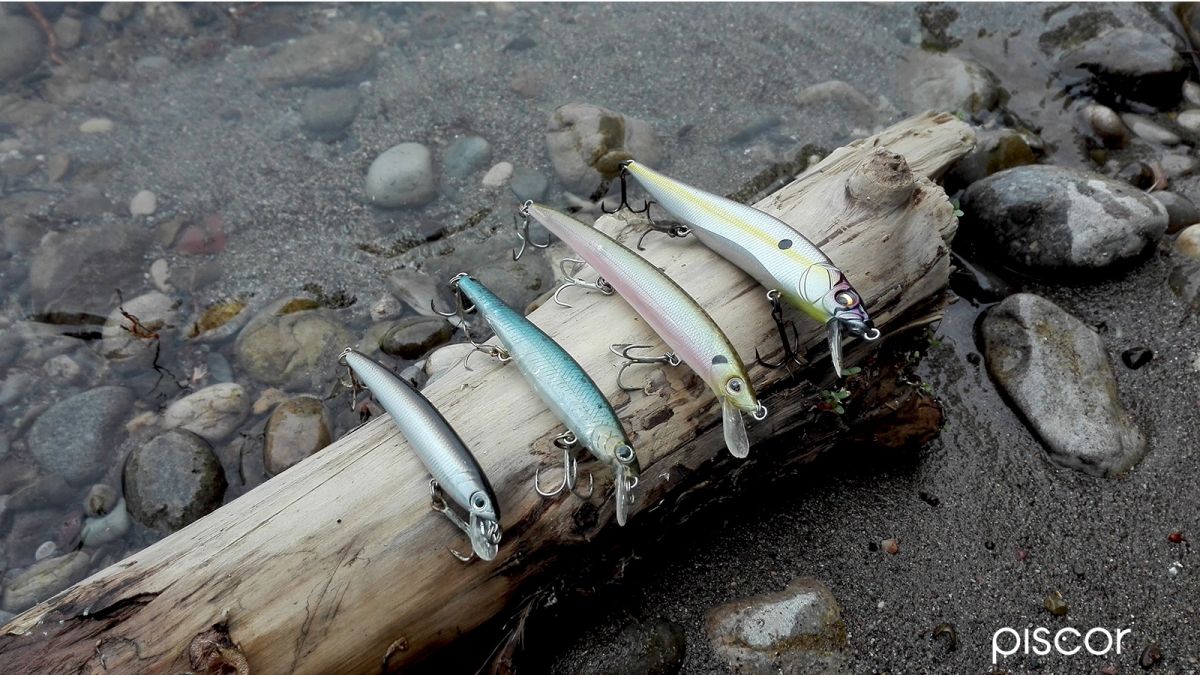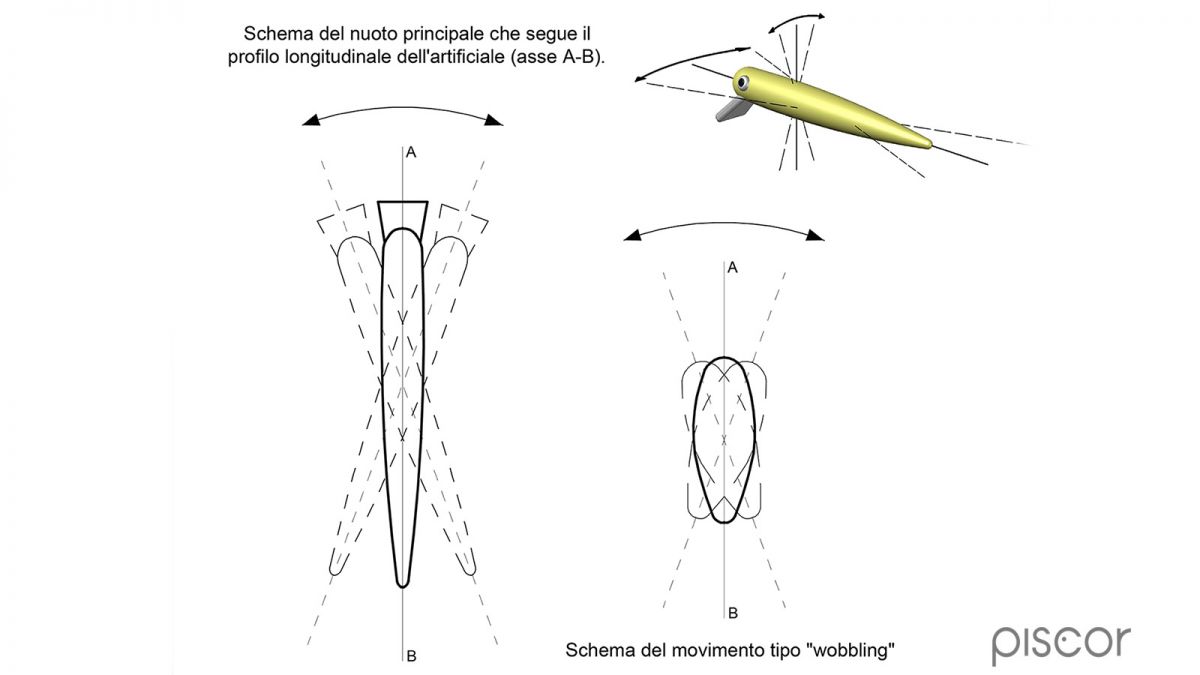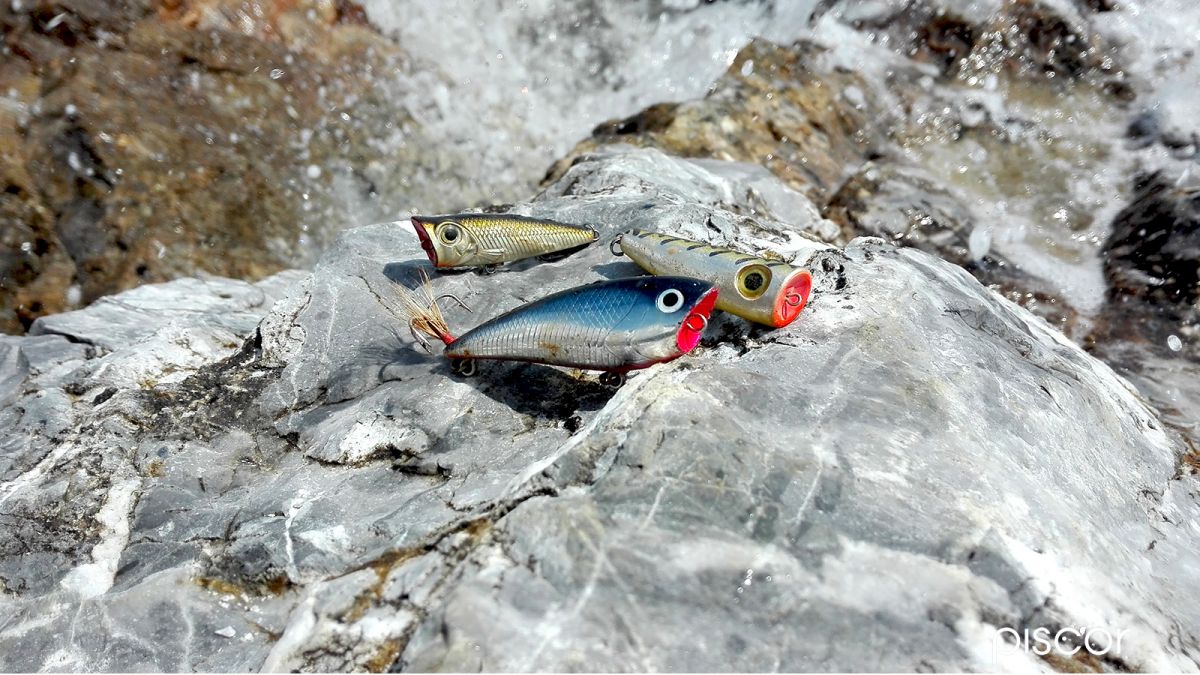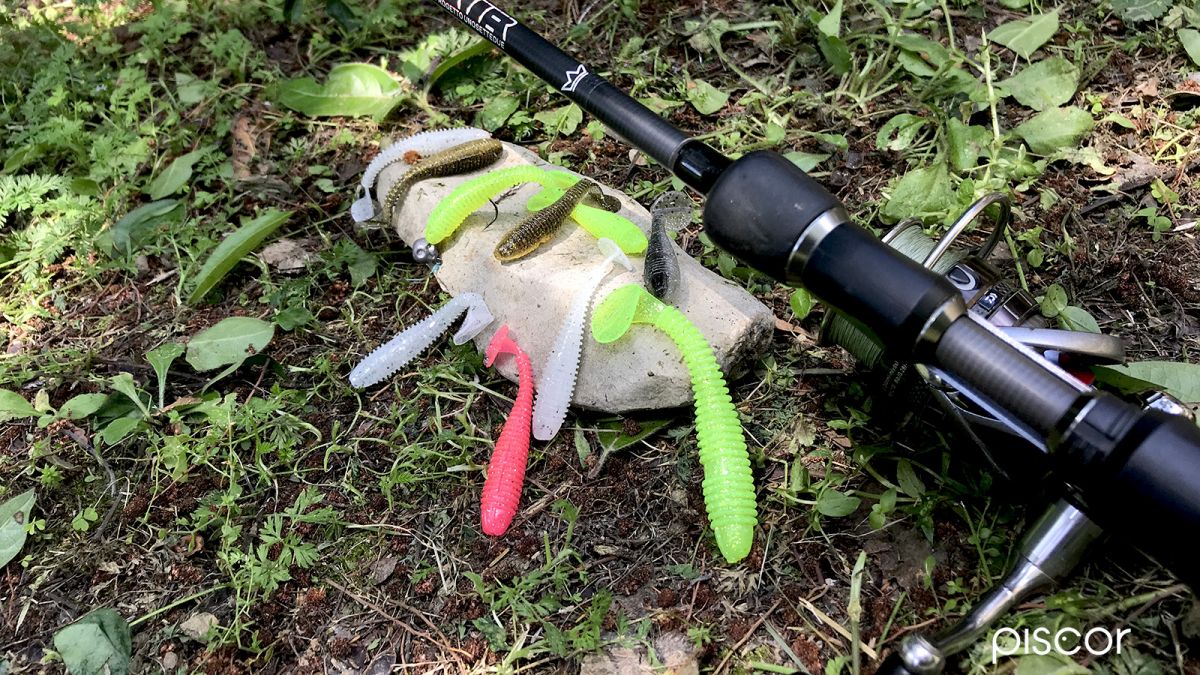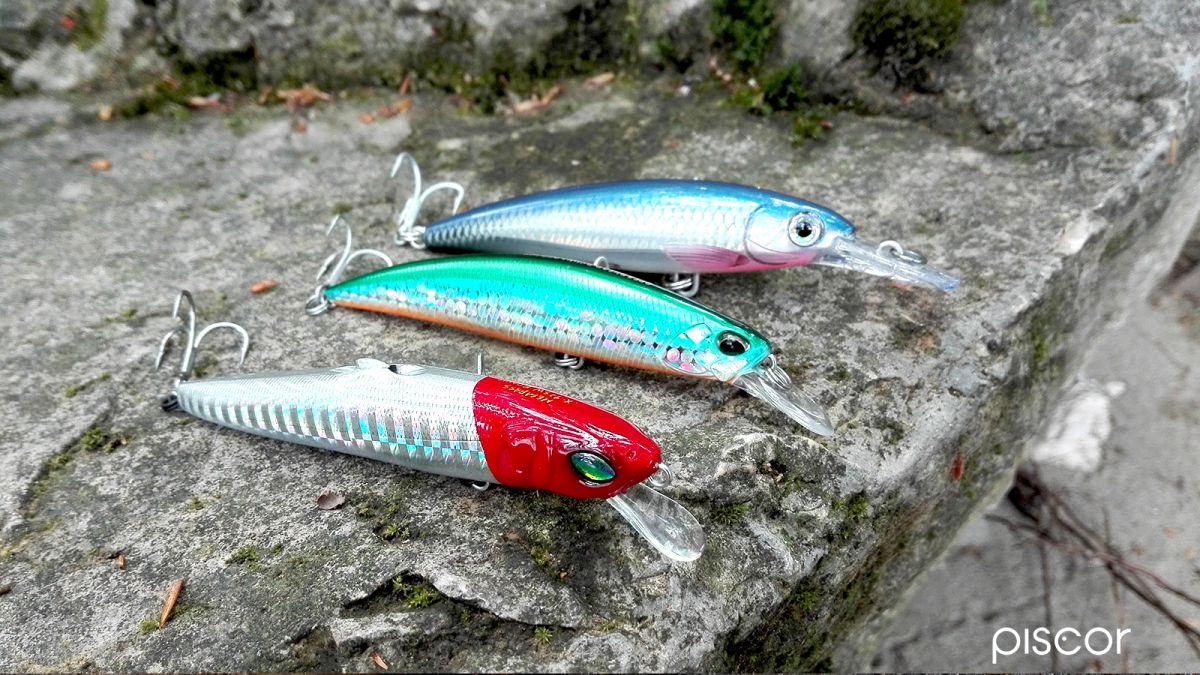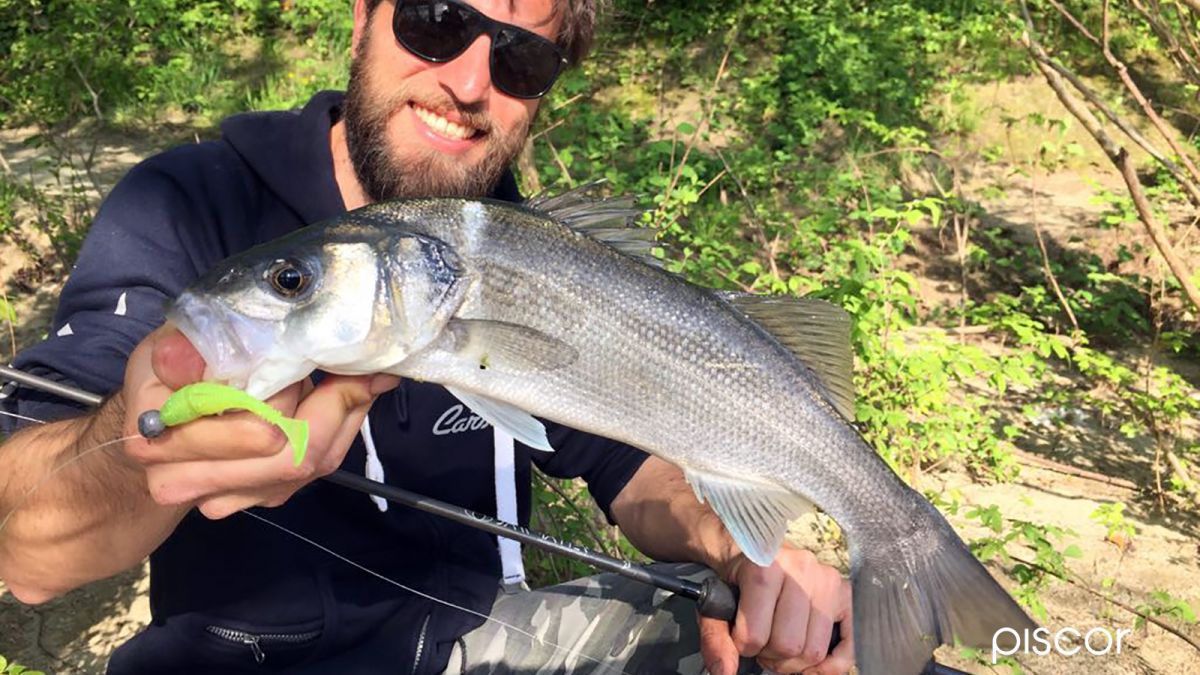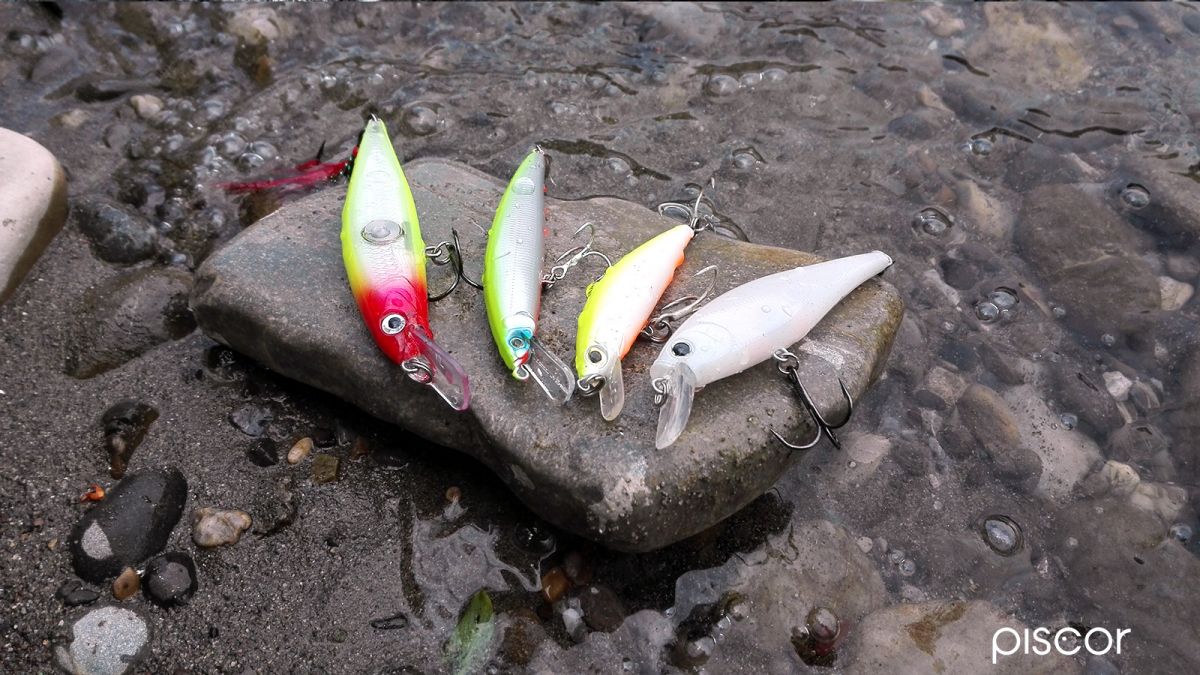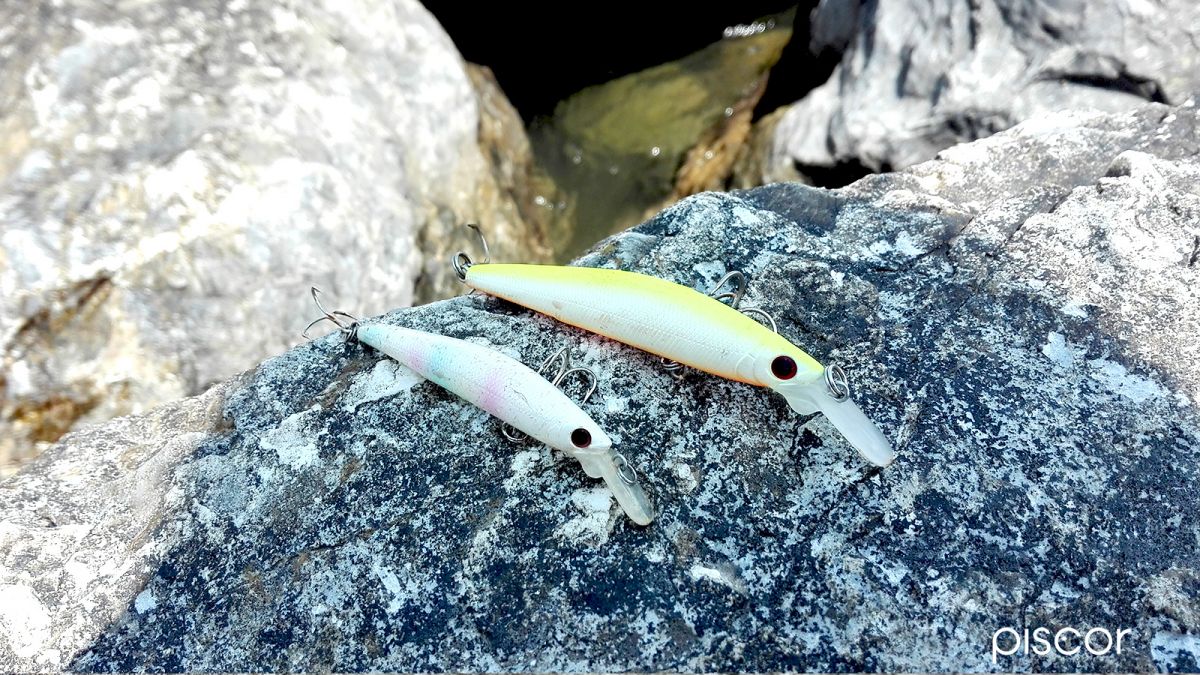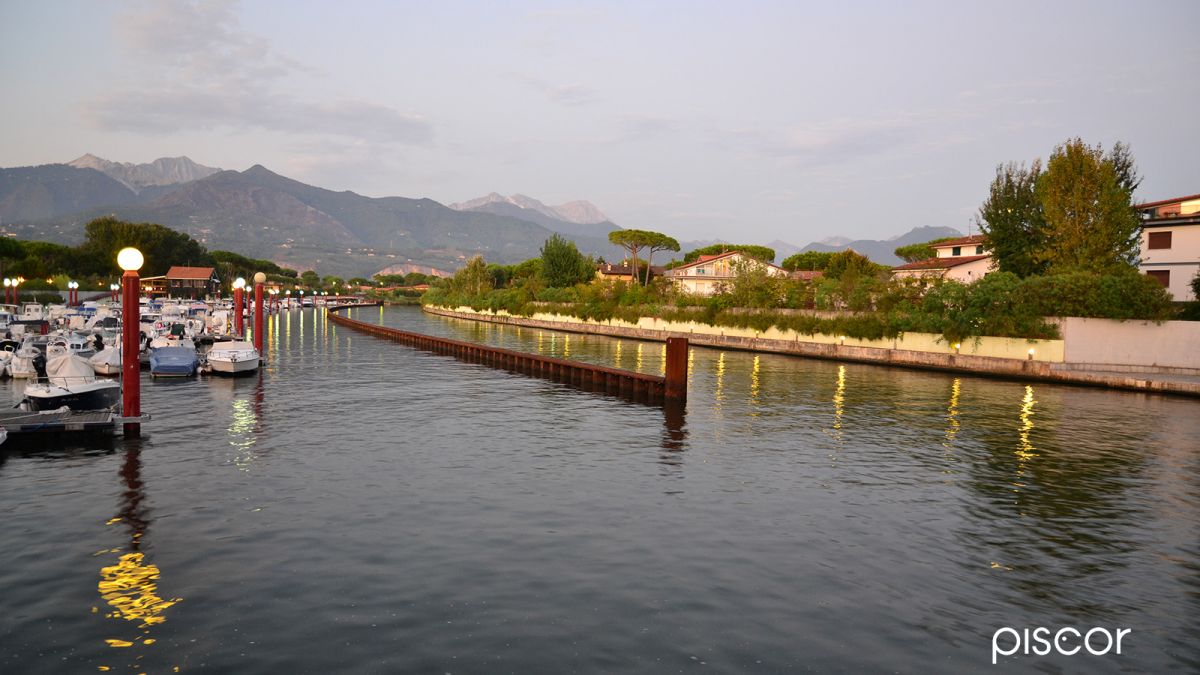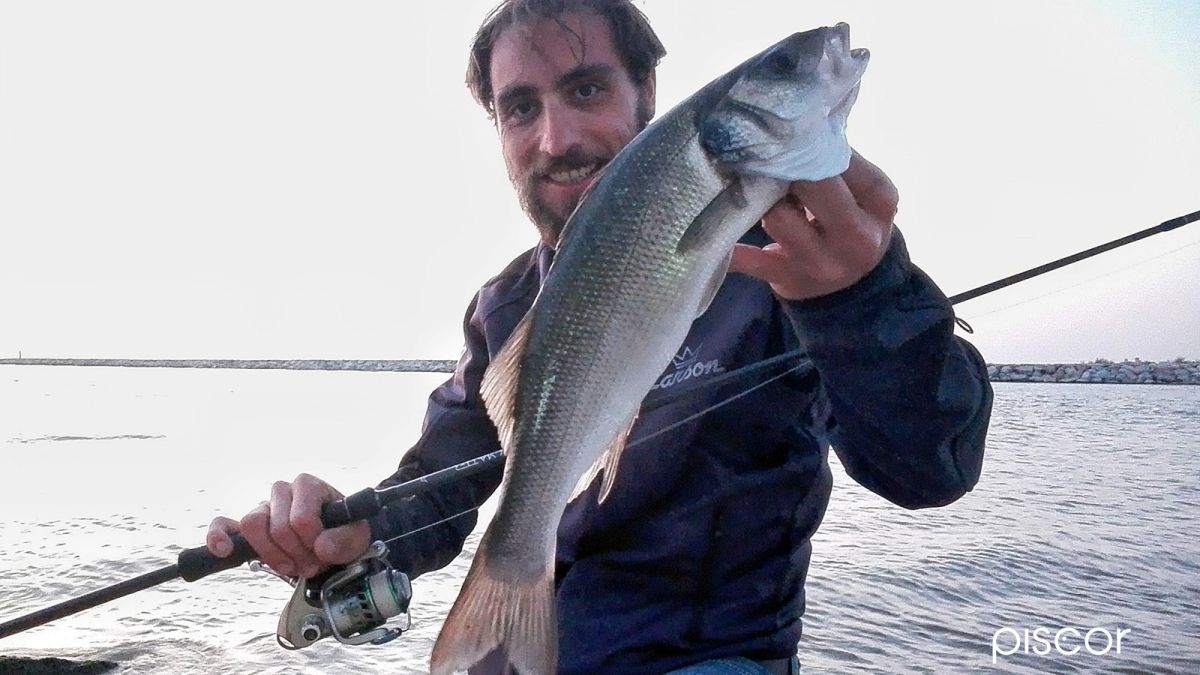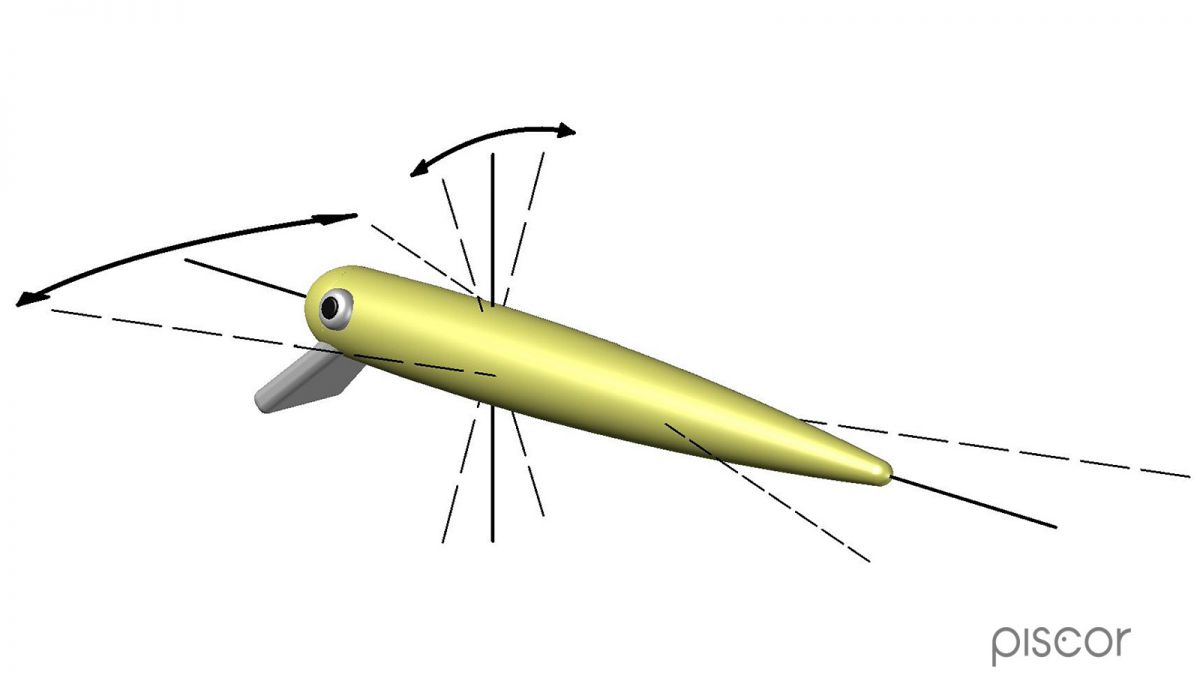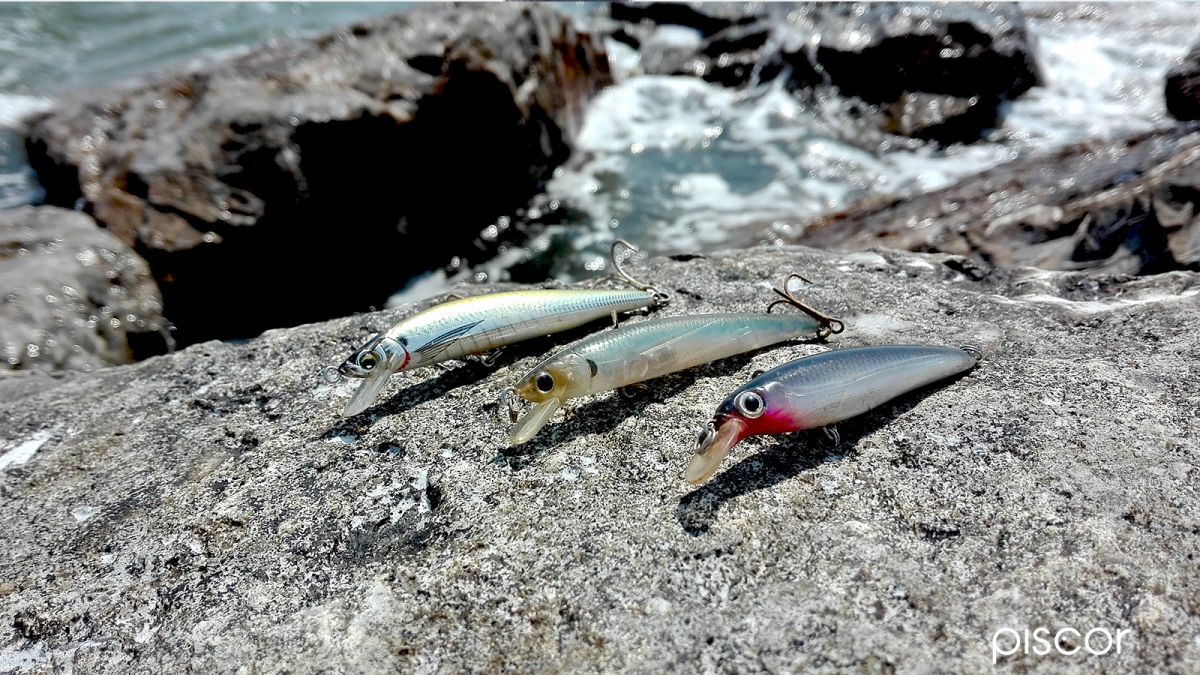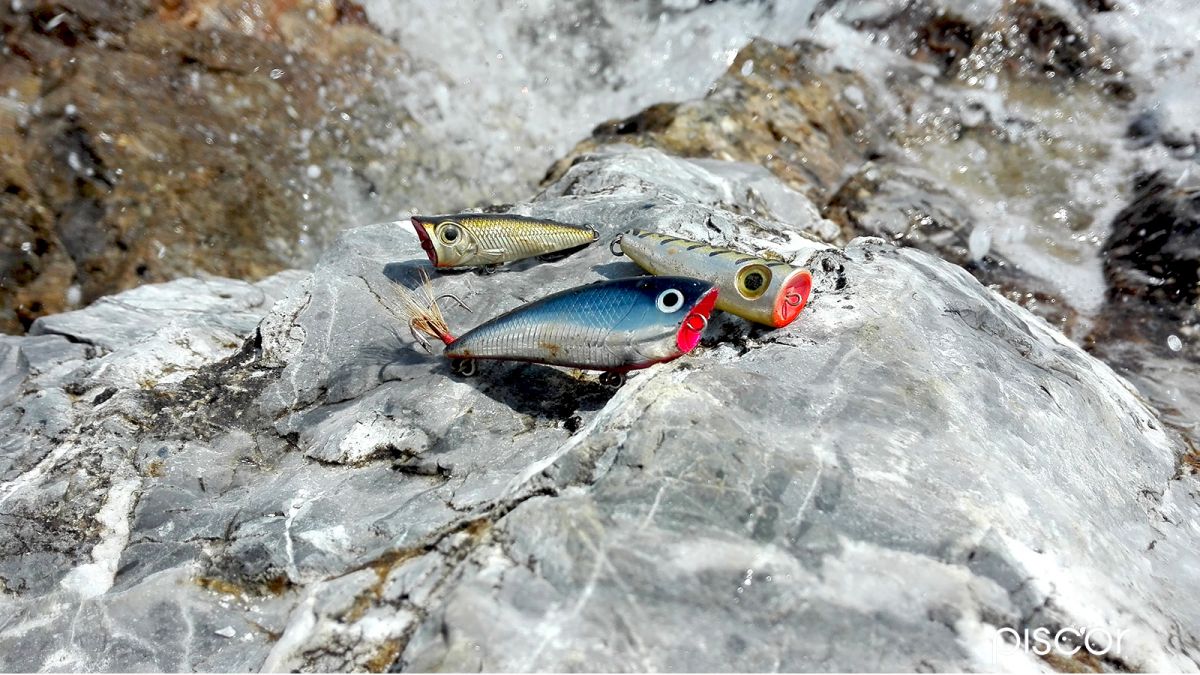The Spinning technique allows various types of approach to face a sea bass fishing session, with the use of appropriate equipment and bait we will be able to search it in any water layer.
A medium (soft) action rod of 2.40 m length with an approximate casting weight of 5-25 grams, associated with a good size reel 3000/4000 will be enough to start to face the majority of the sea bass spinning sessions in this period.
About wires, both braided and nylon will be good, but considering that most of our spots will be full of submerged obstacles such as trunks or rocks and other pitfalls, a good braided is recommended which, being absolutely free of elongation, will allow a more direct contact with the bait comparing to the nylon and therefore a firmer retrieve in case of bite, a better maneuvering of the artificial and the possibility to understand the characteristics and the roughness of the seabed; the lack of stretching coefficient in the braided will be filled by the soft action of the rod which will perfectly match the joints and the heads of the fish during the fighting phase.
The wire diameter can vary from 0.16 to 0.20 if we know we’re in challenging spots and perhaps with the presence of important fish; inevitable a rig like fluorocarbon shock leader of variable length from 50 cm per meter, diameter 0.25 / 0.35 mm; do not forget that in addition to the obstacles we should also defend ourselves from the armor of the queen herself, it has sharp parts at the head and gills as well as the spines on the dorsal fins, so be careful to avoid unpleasant breakages or rubbings that can damage our line.
EQUIPMENT
We will analyze below the main types of bait used for sea bass spinning. We immediately clarify that there is no particular "queen bait", everything revolves around the type of spot to face and the activity and position of the fish, many times they will let us see them if present in the first layers of water, others times it will be our experience to be an ally. However we are going to propose a selection of baits that have given satisfaction over time.
Considering their diet consisting mainly of mullets and other white fish, imitations will have to go in this direction. Among the most used and widespread without any doubt there’s the minnow, there are different types that swim at different depths and this is mainly due to the size of the blade and the heaviness of the body of the artificial.
Minnows are in the category of hard bait, the baits called "hard", reproductions of fish made with a particular bicomponent resin, in the past they were made mostly in balsa or samba wood and only externally resinated.
Nowadays hard bait are increasingly leaving space to soft bait, the gum, reproductions of minnows made with a particular gum-based silicone material and other additives that determine the characteristics of hardness, elasticity and color of the bait.
But let's take a step at a time and let's face the wide field of hard bait.
THE CHOICE OF THE MINNOW
The choice will depend on many factors, without a doubt the two main ones are: the hunting area of the fish and the transparency of the water.
They also differ for other characteristics, one is determined by the floating properties in the fishing phase: floating if when stopped in recovery phase tend to rise more or less quickly, suspending, if when blocked maintain their position in fishing, generally appreciated with recoveries to jerkate in case of fish very apathetic or undecided in attack, and sinking, if not recovered they tend to go down, their use is often unavoidable in case of very important backdrops, especially if you encounter situations where the strike-zone is very narrow and located in depth, this feature allows us to immediately enter the artificial fishing.
Another peculiarity of minnows will be swimming. The movement of an artificial is determined by the shape of the body and the blade, oscillating from right to left following the main axis of the longitudinal profile of the bait.
Nowadays the market offers a wide range of products and every company creates its own artificial with certain characteristics of swimming and sinking. In order not to complicate life too much we will synthesize in two macro categories: those with a narrow swimming, where in the recovery phase the artificial creates many oscillations in close radius along the main axis and those with open swimming, where the artificial creates a smaller number of oscillations but with a wider radius along the main axis.
Some models are also equipped with "wobbling" movement, that is an oscillatory movement during swimming from right to left according to the transversal axis of the artificial.
Generally the sea bass, especially at night hours, tends to hunt in the first layers of water, sometimes you feel its presence from the obvious prey, beautiful and exciting explosions afloat. In that case, our approach will be to fish with artificial that will have to work and probe from the first layers of water up to the top-water.
Baits that fall from 10-15 cm up to 40-50 cm are fine to unleash the fury of the queen. When the queen is positioned in the lower layers we can look for it with artificial ones that fall from 60 cm up to 2.50 meters generally characterized by a more pronounced paddle.
The recovery, more or less slow, can be performed either linearly or with small jerkates; the latter particularly indicated with floating or suspending artificial in situations of fish not very active or apathetic.
Even in cases of multiple and timid attacks without success, as often happens, a very slow and linear recovery could help us to provoke a more determined attack, making us enjoy a good fight. These details you will have to see them and experience them during fishing, depending on how best the fish responds.
Always try to figure out what are the favorite preys by the queen, often imitating small troops in trouble, with minnow swimming tight, you can make a difference.
WTD and POPPER
An interesting and often decisive approach is to top-water, afloat, is made with artificial such as popper and walking-the-dog, generally marked with the initials WTD. Fishing afloat creates a strong movement of water and many vibrations that reach up into the lower layers of water.
Being a very visible and interceptable prey our artificial will have a short life if a queen is nearby lurking. Very often it is the first approach that many love to have just arrived on the spot, just for the immediate search for active fish.
Top-water attacks are among the most beautiful and exciting that remain in the memories of the spinning fisherman.
Popper generally present with the elongated body without the headstock and trunk. It recovers with a low rod, making decisive strokes with the top down with more or less prolonged pauses; it is thanks to its characteristic truncated and concave head that the movement, imprinted by the jerkate, allows to create that "pop" due to the movement of water by simulating a little fish in difficulty, this clearly attracts the predator that is able to identify its prey very well. The WTD looks similar to the popper, but the head is elongated and prominent, with no scoop.
It recovers with a low rod, making small tears with a rather linear recovery, our artificial will swim from right to left in a very appealing way, simulating a fleeing prey.
Also in this case the speed of recovery depends on the activity of the fish, with the presence of very active fish our artificial will be intercepted even with sustained recoveries, indeed this can be a triggering factor of an attack, in case of eaten bland or short helps a slower and less rhythmic recovery, or try one of your popper instead.
SOFT AS ... GUM
But let's not forget about the gum. The "shad" have often made the difference by giving us great satisfaction.
Recovered in a linear way or with small hops, it is possible to probe practically all the layers of water. Or relying on the curiosity of the fish, worked on the bottom in order to raise small clouds of mud.
The "gum" are generally represented by reproductions of small fish commonly called "shad". The soft baits have characteristics very similar to the hard bait, the colors have evolved from any monochromatic shade to true and proper reproductions of the fodder fish.
Another property is the swimming of the artificial, which is determined by both the shad shape and the recovery speed. As in the hard bait there are those with a narrow swimming, where in the recovery phase the artificial creates many vibrations with short and determined movements of the tail and those with open swimming, where in the recovery phase the artificial creates less vibrations, but with waves of better frequencies; also in the soft bait it is possible to find shad models also equipped with "wobbling" movement.
The final part determines the undulatory swimming, but some types of shad are deprived of it, they are similar to small eels and also these are an excellent and valid bait.
Now the market offers a huge choice and you can find them of many shapes, sizes and different colors. Generally mounted on "jighead", leaded heads with hooks, or triggered on a Texas hook better provided with their own lead drift.
The weight of the head to use depends on the conditions given by depth and water flow, it can go from 2 up to 10/15 grams, while the size of the hook depends on the physical size of the bait. The most commonly used tires are the 2.8 "and 3.8" tires.
There are also already complete baits on the market with head and shad in gum supplied.
WHEN AND ... WHY
First of all you have the possibility to have some solutions of triggering anti-stranding, so to fish more easily also between stones and obstacles of the sub-shell or in the high depths, all in all from the economic point of view the gums are much more advantageous than to other baits; very often triggers of shads without leads on texas hooks among the algae or between the foams of the rocks of the shallow waters have been found winning for several reasons, the gum in water flow tends to have a slower and natural behavior compared to a hard baits, therefore more desirable, and an anti-struck trigger that allows a movement and a clean recovery of our artificial even among algae, stones and submerged obstacles.
Nowadays bass fishing with the use of tires is increasingly widespread, with truly remarkable results both at sea and in inland waters.
THE COLOR OF THE ARTIFICIAL
This is another of those issues that often puts both specialists and beginners into difficulty because of the ability of the sea bass to be able to amaze even the most experienced.
Clearly the basic rules to be followed for the choice of color are mainly the classic ones of spinning, ranging from light and natural colors in transparent water conditions to dark, white or even fluorescent shades for situations of veiled or cloudy waters.
But most of the time this can be compromised, here we could open an entire chapter because even among the most experienced fishermen there are different schools of thought, many even believe that the color of the artificial is not so influential, but the true and unique difference is made by the characteristics of swimming and the vibrations emitted by the moving artificial; in some conditions, especially for the research of sea bass in inland waters, I have personally been able to confirm this thesis.
In conditions of very cloudy waters and with a strong water flow where the visibility of the fish is very limited, it is better to rely on the physical characteristics of our artificial rather than coloring, so a nice swimming and a good number of vibrations emitted on different layers of water.
On the market there are a large number of models of various shades of color, the artists designers stunning with artificial liveries breathtaking and certainly captivating.
THE CHOICE
To start, an advice that I can give, is to have in your box at least those three or four classic colors that allow you to tackle a little 'all fishing situations, are considered the "evergreen" or a beautiful white , like a classic redhead, an excellent fluorescent yellow and greedy natural colors that will imitate the classic prey such as mullets, sardines and blue fish; during the choice of your artificial you also make a small consideration thinking about the classic colors of the water of your spots. All this clearly applies to both hard and soft baits.
The classic nocturnal sea bass fishing session, especially near the outfalls or in the inland waters, will be played for the most part in the first layers of water, since the sunset and during the night the bass is often activated coming to hunt small fish on the surface or in areas of very low water, very often also giving against the classic rules that follow favorable tide or similar stuff, you notice it from the beautiful and obvious hunt, she herself tells us where and how to look for it.
In the case of top water fishing at night with WTD or popper, the main factor triggering the attack will be the vibrations emitted by our artificial, in this case the color is only a factor of minimal importance; but if we were to fish already in the next layers below it changes, in this case the color becomes a factor that could make the difference because being more visible facilitates the attack of the predator.
If the hunts are made on shoals of small sardines rather than small mullets, better to have among our alternatives an artificial with iridescent colors or reflecting surface, so that our bait during recovery exhale small flashes of light, just as they do the flocks of fish fleeing from a predator. These small tricks often make the difference.
There are many approaches and types of spinning lures, for every situation there is an artificial that works in the desired water layer, of different sizes and colors; let's remember that spinning is a hunt and we as "hunters" have the task of identifying the position of the fish and stimulating it with one of our baits; believe in your artificial, imagine its movement beneath the surface, try to understand how the bottom is made and where the fish could position itself.
There is no secret for this fishing, even the classic proverb "in the right place at the right time" most of the time is wasted, in this approach there is only the constancy and determination of a fisherman who wants to experience the emotion and satisfaction priceless to catch a fish as difficult as sea bass with a bait that is basically fake, he gives it life with his fishing rod; I recommend it, is a good dose of adrenaline that begins with a blow in the rod, a retrieve and ends up with a good catch and the subsequent release.

